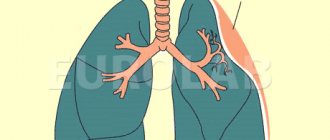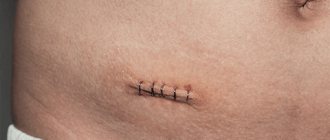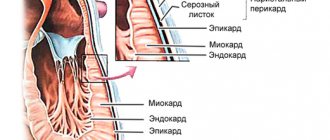Pneumonia is an inflammatory process that affects the lung tissue. This disease is infectious in nature and is caused by various types of pathogens. The contagiousness of pneumonia depends on the type of microorganism and the degree of proximity of contact with the patient. In addition, the state of a person’s health and the degree of his immune defense also play a role: someone’s body can easily cope with infection, and for someone, a small amount of pathogenic flora leads to the development of a severe inflammatory process.
Is it possible to get pneumonia?
You cannot become infected with pneumonia directly; this follows from the definition of the disease. It only indicates the localization of the source of inflammation. Under certain conditions, pathogenic microflora, having penetrated the body, can trigger a pathological process in the lungs, but this does not always happen.
Pneumonia can be caused by bacteria, viruses, fungi, and protozoa. The causes of pneumonia in most cases are pneumococcus, streptococcus and staphylococcus. In such cases, a person poses the greatest danger to others at the initial stage of the disease, when a large number of pathogenic microorganisms enter the environment, especially when a person coughs. However, even when infected, for example, with pneumococcus, an inflammatory process in the lungs develops in 1-2 cases out of 10. More often, people do not get sick if they have a strong immune system, or the inflammation affects only the upper parts of the respiratory tract, without descending into the lungs.
Most often, pneumonia is contagious to others when it is provoked by so-called atypical pathogens. Among them, mycoplasmas, chlamydia, and legionella are common. Viruses are also classified as atypical pathogens. The bacterium Legionella is highly virulent, and infection by this microorganism very often leads to the development of an inflammatory process in the lungs.
Viruses that cause pneumonia are also contagious. It is not a fact that when the virus is transmitted from one person to another, the latter will get pneumonia. For example, infection with the measles virus very rarely causes pneumonia. If a patient has pneumonia due to measles, he will be dangerous to others precisely as a carrier of the virus of this disease, capable of transmitting virions to a healthy person, while the risk of developing pneumonia is very low. The same applies to those cases when pneumonia develops as a secondary disease against the background of viral infections such as influenza or ARVI. The risk of getting these diseases through communication is high, and very high through kissing and other close contacts. However, the likelihood of developing pneumonia against their background will depend on many factors: the degree of immune protection, the person’s health status and others.
Some types of pneumonia are not contagious at all. Inflammation of the lungs can occur in a bedridden patient due to stagnation of fluid in the respiratory tract. Opportunistic microflora present in the body of every person receives optimal conditions for reproduction and activation of inflammation.
Diagnostic measures
Diagnosis of atypical pneumonia causes certain difficulties for specialists, since the symptoms of the pathology are nonspecific and mild. Pulmonologists and infectious disease specialists study the clinical picture of the disease, examine patients, and collect anamnesis. They pay special attention to the shape of the chest, the color and purity of the skin, the size and soreness of the lymph nodes, liver, and spleen. During the conversation, doctors find out who the patient has been in contact with and whether he has traveled to regions where SARS is endemic. Percussion reveals dullness of pulmonary sound in the inferolateral and posterior parts of the chest. Auscultation, against the background of weakened breathing, crepitus and moist rales are heard.
Suspecting the development of atypical pneumonia, doctors prescribe high-precision studies, trials and tests to patients. To confirm the diagnosis and select treatment tactics, the results of laboratory and hardware techniques are necessary.
- X-ray examination of the lungs in two projections allows us to determine the presence of an inflammatory focus. Infiltrates are located in the peripheral parts of the pulmonary fields, and as the disease progresses, they increase in size and become bilateral. Lung tissue is poorly infiltrated and heterogeneous. “Blurred” shadows appear on it, and diffuse loop-like and mesh elements appear on the altered pulmonary pattern.
- Computed tomography reveals changes in the structure of the lung tissue of an inflammatory nature: round foci within one lobe of the lung with a tendency to merge.
- Pleural puncture and bronchoscopy are performed to collect biomaterial.
Microbiological examination of sputum - its inoculation on special nutrient media, isolation of the infectious agent, its identification and determination of sensitivity to antibiotics.- Serological methods - complement fixation test or enzyme immunoassay based on monoclonal antibodies.
- PCR diagnostics - detection of the genetic material of the pathogen in the sputum or blood of the patient.
- Hemogram - signs of bacterial or viral inflammation: leukopenia, lymphopenia, thrombocytopenia, increase in the relative number of neutrophils.
- Biochemical blood test - assessment of the enzymatic activity of the liver, changes in the gas composition of the blood.
Diagnosis of atypical pneumonia is aimed at detecting lesions in the lung tissue and identifying the causative agent of the infection. The results of the manipulations allow us to make an accurate diagnosis and prescribe effective drug therapy.
At-risk groups
Not all categories of people are equally susceptible to infection. The risk of contracting pneumonia depends not only on the virulence of the microorganism, but also on the condition of the person and the functionality of his immune system. The following groups of people have the weakest resistance to pathogenic flora that can provoke pneumonia:
- small children (up to 1-1.5 years);
- aged people;
- patients suffering from diseases causing serious immunodeficiency;
- pregnant women;
- patients suffering from chronic pathologies of the cardiovascular system, bronchi and lungs, kidneys;
- diabetics;
- allergy sufferers;
- people with reduced immunity due to chronic alcoholism, drug addiction, smokers.
General information
In pulmonology, atypical pneumonia refers to respiratory diseases. Unlike classic cases of bacterial pneumonia , where the causative agent is pneumococcus - Streptococcus pneumonia, in this case the inflammation of the lung tissue is caused by other “non-standard” pathogens - viruses, bacteria and even fungi. In addition, this group of pneumonia is distinguished by an unusual clinical picture - the prevalence of general toxic effects over bronchopulmonary pleural syndrome. Most often it occurs in the form of epidemiological outbreaks in children's, student, and army groups, also spreading focally in families.
Transmission routes
Most often, bacteria and viruses are transmitted from person to person by airborne droplets or contact. These methods of infection are also called bronchogenic, that is, the infection enters the body through the respiratory tract. During the initial development of the disease, pathogenic microorganisms spread through the air when coughing, sneezing, or even just talking. Influenza viruses, acute respiratory viral infections, and some types of bacteria are transmitted by airborne droplets.
Pathogenic microflora is transmitted through household means: through dishes, linen, towels and other household items. Not all family members will necessarily develop pneumonia, but infection with bacteria and respiratory viruses very quickly affects those living in the same area. The same sometimes happens in hospitals: nosocomial or hospital-acquired pneumonia is considered the most severe. The microflora that becomes infected in a hospital setting is resistant to many types of antibiotics. In combination with other factors (for example, a patient who is bedridden), pneumonia quickly develops.
There is another possible mechanism for the spread of infection. If a woman gets an infection during pregnancy that leads to pneumonia, she passes the disease on to her baby. Viruses and bacteria can overcome placental protection, and the infection can also be transmitted during childbirth. The newborn baby will be sick, although he will not necessarily develop an inflammatory process in the lungs. However, this happens quite often, since the respiratory and immune systems of a child are not as perfect as those of an adult. In addition, he is in a horizontal position most of the time, and the lungs become inflamed more easily.
Treatment process
Treatment of atypical pneumonia consists of destroying pathogenic agents and eliminating unpleasant symptoms. Patients with high body temperature and signs of respiratory dysfunction are hospitalized in a hospital. They are placed in rooms with a modern ventilation system, which is very important for respiratory diseases.
All febrile patients must remain in bed, eat properly and drink plenty. A specialized diet is aimed at eliminating irritating foods from the daily menu and introducing easily digestible, high-calorie foods into the diet. Medicines are prescribed by the attending physician, based on the identified symptoms and etiology of the disease.
Etiotropic therapy consists of the use of antimicrobial drugs. Antibiotics are selected taking into account the results of the sensitivity test. Patients are prescribed macrolides - Azithromycin, Erythromycin, lincosamines - Clindamycin, fluoroquinolones - Sparfloxacin, Ofloxacin, cephalosporins - Ceftriaxone, Cefazolin. The course of treatment lasts 10-14 days. Shorter cycles are not acceptable. They contribute to chronicity of the process and recurrence of infection. If the cause of the pathology is viruses, antibiotic therapy is carried out for prophylactic purposes - to prevent secondary bacterial infection.- Atypical pneumonia caused by viruses is treated with Ribavirin and its analogues. This antiviral agent has pronounced activity against coronaviruses. Blood plasma transfusions from patients who have suffered from SARS have a good therapeutic effect.
- The main goal of symptomatic therapy is to relieve symptoms of a respiratory disease. It includes the use of antipyretics and NSAIDs - Ibuprofen, Nurofen, Paracetamol; mucolytic and expectorants - Ambroxol, ACC, Bromhexine; bronchodilators – “Beroteka”, “Beroduala”, “Eufillina”; diuretics that relieve edema - Furosemide, Hypothiazide, Veroshpiron.
- Detoxification - infusion of saline and organic solutions: Ringer, Reopoliglucin, Acesoli, saline, glucose.
- Corticosteroids have a powerful anti-inflammatory effect - Prednisolone, Dexamethasone.
- Immunosubstitution treatment is prescribed in severe cases in the absence of effect from etiotropic drugs. Placental gamma globulin is injected into the victim's body.
- Oxygen therapy is performed for persons with signs of hypoxemia. Humidified oxygen is supplied through a special mask under low pressure.
- Resuscitation measures are indicated when hypoxia and respiratory failure increase. Patients are connected to a ventilator and surfactant preparations are administered by intubation or inhalation.
Drug therapy is supplemented with physiotherapy, massage, breathing exercises and exercise therapy. These procedures are prescribed after the patient's condition has stabilized.
Incubation period
Each microorganism needs time to “settle” in the body, establish itself and begin to multiply. The time of migration and establishment of pathogenic microflora is called the incubation period. At this stage of the disease, the person is already dangerous to others, so at the first signs of a respiratory infection, it is better to consult a doctor and begin treatment while staying at home.
The duration of the incubation period is individual for different types of microorganisms. As a rule, it lasts several days, rarely – a week or longer. At this time, there are practically no symptoms; a decrease in tone and a slight increase in temperature may be observed.
Symptoms
Atypical pneumonia has a staged course. The disease traditionally begins with an incubation period, which lasts on average 7-10 days and ends with the appearance of clinical signs. Prodrome is a time of nonspecific precursors characteristic of most acute respiratory viral infections. Malaise, coughing, muscle and joint pain persist for up to 3 days. During the peak period, intoxication increases, respiratory disorders occur, reflecting the degree of damage to the lung tissue. Convalescence is the recovery of the patient, during which inflammation subsides and the functioning of the respiratory system is restored.
The clinical picture of atypical pneumonia is polymorphic. It depends on the main etiological factor - the causative agent of the infectious process. There are common manifestations of the disease that occur with any form of microbial damage to the lungs. These include:
- Febrile fever
- Cephalgia of varying severity,
- Lethargy and weakness
- Phenomena of asthenia,
- Dyspnea,
- Nocturnal hyperhidrosis,
- Chest pain,
- Sore and sore throat
- Cough,
- Myalgia and arthralgia,
- Sleep and appetite disorders.
In children, atypical pneumonia is characterized by a poorly expressed temperature reaction. The main signs of pathology occur against the background of normal or subfebrile body temperature. Patients become lethargic and apathetic, sleep poorly, refuse to eat, and lie on their side on the side of the affected lung. The forced position reduces chest pain. Young patients experience shortness of breath, hyperhidrosis, vomiting, diarrhea, and moist hoarseness. Polymorphic rashes appear on the skin, the rhythm and frequency of breathing are disturbed, and short-term apnea is possible. The clinical picture is aggravated by enlarged lymph nodes, yellowing of the skin, and impaired respiratory function. In newborns and infants, the disease is extremely severe, poorly treated and often complicated by irreversible processes in the lung tissue. Pulmonologists strongly recommend that parents do not self-treat their child. At the first signs of respiratory pathology, you should immediately contact a specialist who will examine the baby, conduct the necessary diagnostic tests and prescribe effective therapy.
Prevention
For prevention purposes, it is recommended to be vaccinated against pneumococcal infection and vaccinated against influenza annually. Vaccination is an effective method of preventing diseases that can cause pneumonia. You should also take measures to strengthen your immune system. Good nutrition, periodic courses of vitamins, and sufficient physical activity are necessary.
Proper care and maintaining normal sanitary conditions in the apartment will help protect your child from pneumonia. It is recommended to harden children from an early age. It is advisable to avoid contact with people suffering from respiratory infections. In winter, it is necessary to ensure that the child does not breathe cold air and wrap him up more carefully. If signs of an infectious disease are detected, it should be treated correctly. Self-prescription of medications or incomplete treatment of ARVI can provoke the development of pneumonia.
The risk of contracting pneumonia directly through contact with a sick person is extremely small. It is possible to transmit pathogenic microorganisms from a carrier to a healthy person in some types of pneumonia, but not in nosological pneumonia.
Recommendations for quick recovery
For successful recovery of the body after any form of pneumonia, it is recommended to maintain an optimal regimen. The food should be fortified, high-calorie, and gentle from a mechanical and chemical point of view. Warm drinks are very useful - milk with honey and soda, cranberry juice, tea with raspberries, etc. If there are no symptoms of heart failure, the recommended volume of fluid per day is 2.5-3 liters.
IMPORTANT! Monitor the proper functioning of the intestines - constipation and flatulence are extremely undesirable.
The room where the patient is located should be frequently ventilated, the air should be fresh and clean.
Bed rest must be observed throughout the entire period of fever, however, lying still in bed is contraindicated. It is recommended to periodically change body position, sit down and cough up mucus. It is better to collect sputum in a container with a tight-fitting lid; if hemoptysis occurs, you should immediately consult a doctor.
Exercise therapy classes are indicated only after the temperature drops to normal levels or stops at low-grade levels.
Massage and physiotherapeutic procedures are included in the complex of rehabilitation measures. These procedures should be prescribed by a doctor, based on the course of the disease and the age of the patient. Acupressure and cupping massage is allowed. As physical therapy, the patient is recommended mud, paraffin or ozokerite applications, acupuncture, acupuncture, electroacupuncture, etc. Special instructions: at elevated temperatures, respiratory and heart failure, acupuncture is contraindicated.
Treatment of the disease is recommended until complete cure, elimination of not only clinical, but laboratory, as well as radiological signs of the inflammatory process. After discharge from the hospital, it is recommended to continue treatment in dispensaries and sanatoriums that specialize in the treatment of diseases of the bronchopulmonary system.
To treat pneumonia, antibacterial drugs are most often used, which significantly disrupt the balance of normal microflora in the body. This phenomenon can be complicated by digestive problems and the development of fungal infections. To normalize the balance of microflora, it is recommended to consume kefir and yoghurts, which contain live bacteria.
The prognosis for rational and timely therapy is usually favorable. Recovery most often occurs a month after the onset of the disease.
As for preventive measures, they relate to the general sanitary and hygienic principle - combating dust in the premises, nutritious nutrition, quitting smoking, etc. It is very important to promptly treat foci of infections developing in the body, as well as provide adequate therapeutic treatment for ailments that affect the bronchopulmonary system.
Clinical picture in adults
A significant proportion of patients experience atypical pneumonia in a mild or moderate form.
The first signs of infection are similar to those of ARVI:
- Bad feeling.
- Feeling overwhelmed, weak.
- Headaches, muscle pain.
- Dry mucous membranes.
- Cough.
- Pharyngitis.
- Rhinitis.
- Laryngitis.
When listening to the lungs, weakened breathing, crepitus, and isolated wheezing are recorded. In laboratory blood tests - an increase in ESR, leukocytosis.
A distinctive feature of atypical pneumonia is a characteristic paroxysmal cough. Usually a cough occurs when the patient takes a certain position.
Complications and consequences
Adequate timely therapy makes it possible to avoid the development of severe consequences after suffering from atypical pneumonia. All complications are divided into pulmonary and extrapulmonary.
Pulmonary - have a further pathological effect on the structure of the lung. These conditions include:
- Lung abscess.
- Pleural empyema.
- Pleurisy.
- Pulmonary gangrene.
- Acute respiratory failure.
Extrapulmonary complications affect the hematopoietic system, heart, parts of the central nervous system and can manifest themselves in the form of:
- Myocarditis.
- Iron deficiency anemia.
- Encephalitis.
- Meningitis.
- Acute mental disorder.
- Infectious toxic shock.
A favorable prognosis is possible if the patient’s strong immune functions are maintained and all therapeutic measures are timely.
Negative consequences are considered:
- Transition from an atypical form to a chronic form with severe pneumosclerosis.
- Death.
Diagnostics
Diagnosis of atypical pneumonia is characterized by an integrated approach. It is mandatory to complete all stages of the examination:
- Assessing the severity of symptoms.
- Examination of the patient. On auscultation, moist rales and crepitus are recorded.
- Hardware examination - radiography, MRI or CT scan of the chest.
- Laboratory tests of blood and urine.
- Exciter type verification.
X-ray examination
When the first symptoms appear indicating the development of atypical pneumonia, chest x-ray provides the necessary data for an accurate diagnosis. CT or MRI methods are used much less frequently, as a rule, in cases where the interpretation of images is difficult and it is not possible to identify changes in a plain radiograph.
A radiologist describes the images obtained. The conclusion must indicate the nature of the changes - the type of infiltration, the definition of pleural effusion, darkening.
Blood analysis
There are no specific changes in the composition of the blood during atypical pneumonia. As a rule, signs characteristic of most infectious viral diseases are found:
- Increase in ESR indicators.
- Severe leukocytosis.
Viruses and Legionella cause hyponatremia and hypophosphatemia. Chlamydia and mycoplasma may not affect the blood count at all.
Pathogen verification
Establishing the type of pathogen is the key to correctly prescribed treatment. Accurate pathogen verification can be carried out using several methods:
- Cultural - sowing biomaterial on nutrient substrates.
- Immunological - ELISA, RSK, RNGA
- Molecular biological - PCR, DNA (RNA).
For testing, you can take blood, urine, sputum, and effusion from the pleural cavity. The presence and level of antibodies, antigens, and specific immunoglobulins that are produced by the body in response to infection are determined in the biomaterial.









